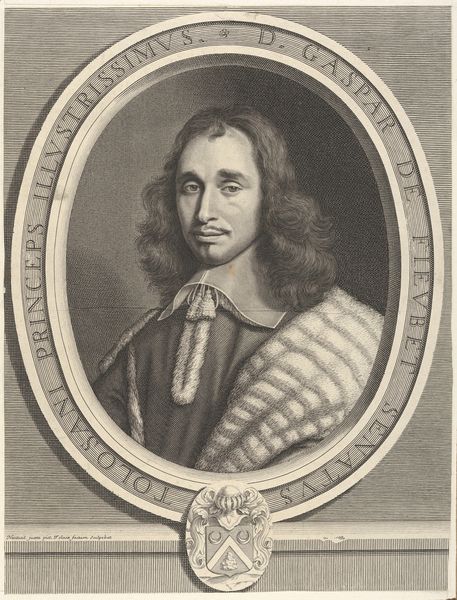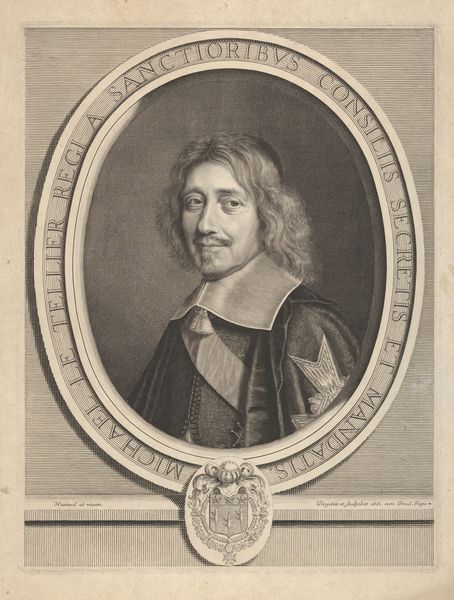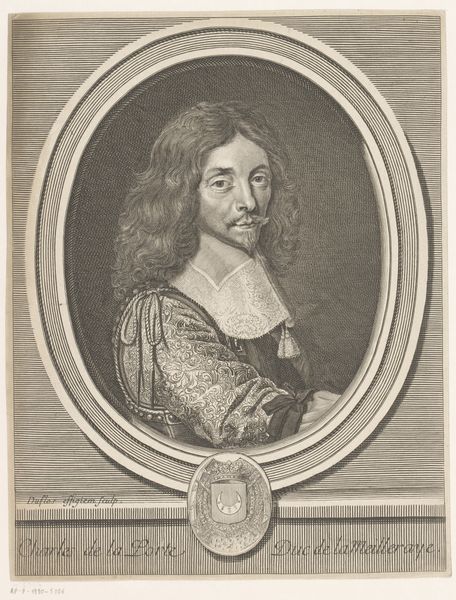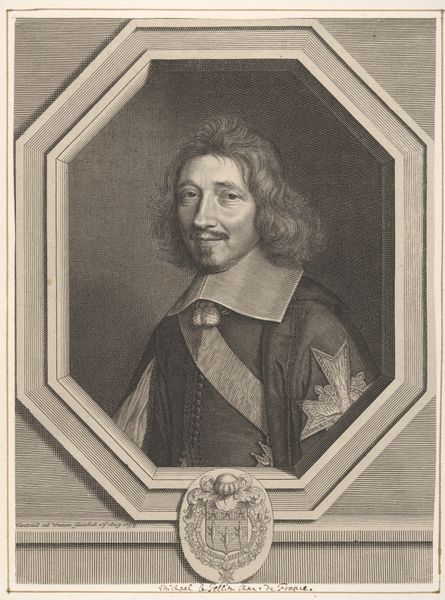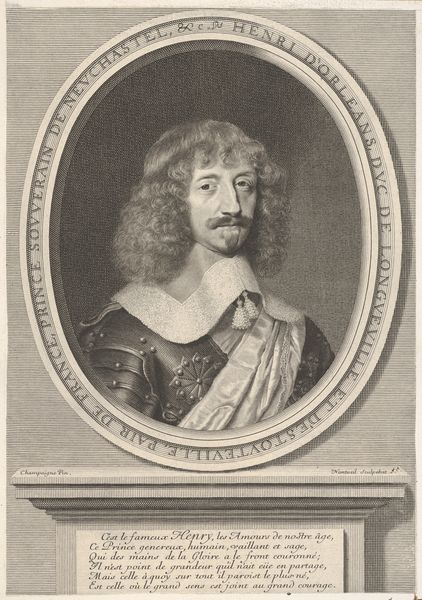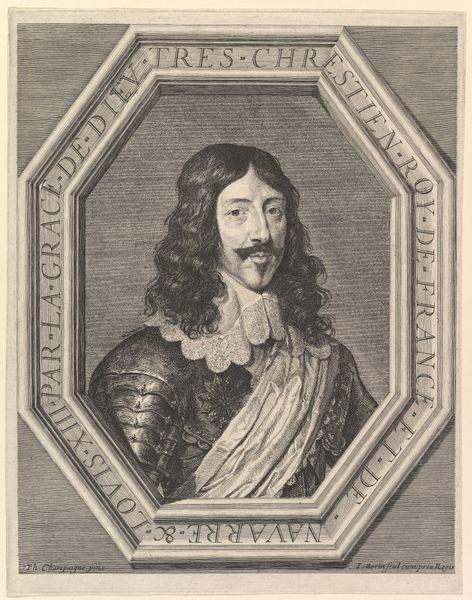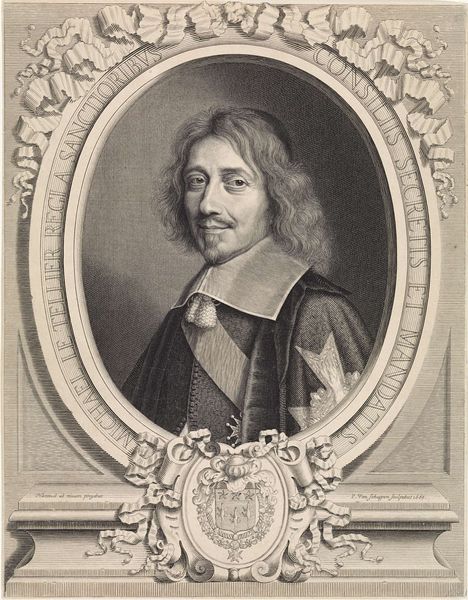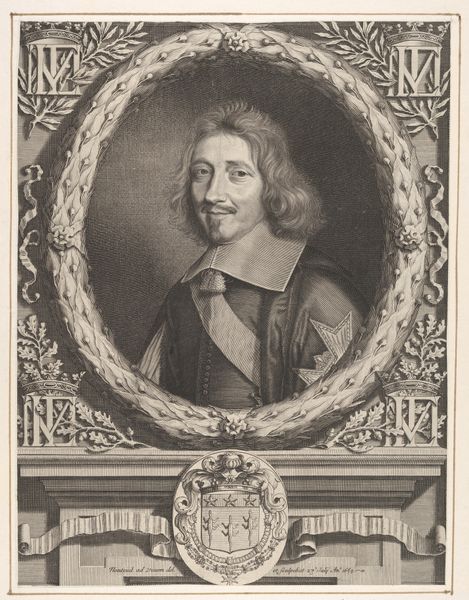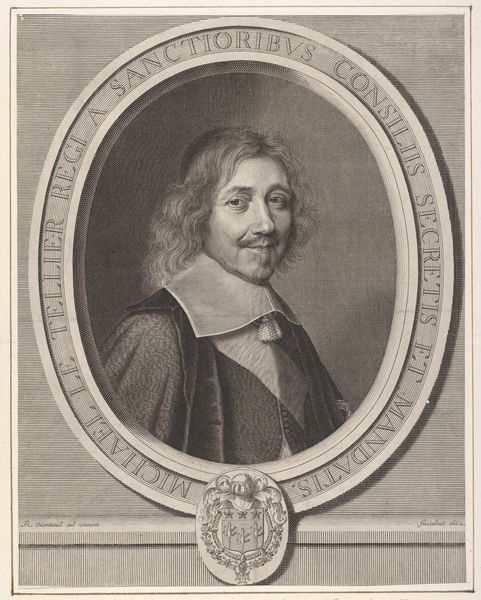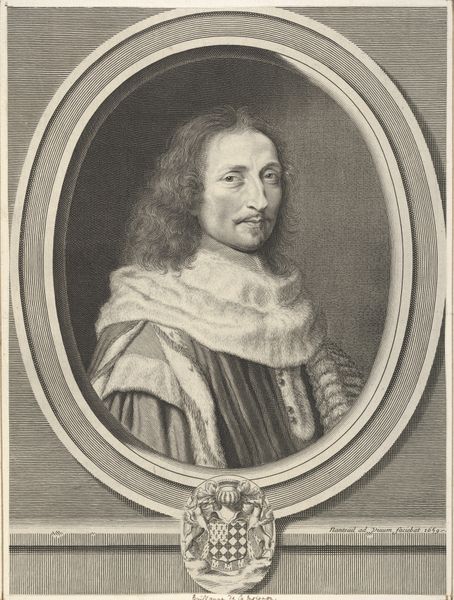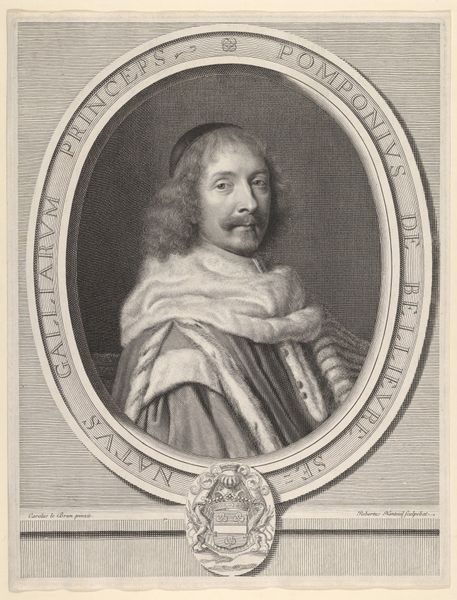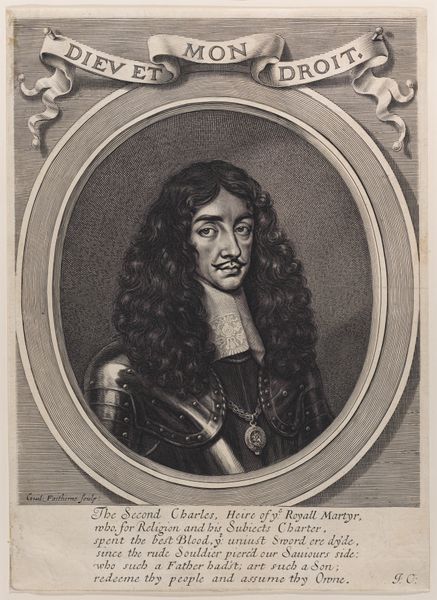
drawing, print, engraving
#
portrait
#
drawing
#
baroque
# print
#
history-painting
#
engraving
Dimensions: Sheet: 15 13/16 × 12 5/16 in. (40.2 × 31.2 cm) Plate: 14 7/16 × 10 3/4 in. (36.7 × 27.3 cm)
Copyright: Public Domain
This print of Charles de La Porte, created by Robert Nanteuil, is made with engraving, a process that uses a tool called a burin to carve lines into a metal plate. The material of the plate, likely copper, has a direct impact on the image; it allows for the precise, detailed lines that define the Duke's armor and elaborate hair. The artist would have applied ink to the plate, wiping the surface so that the ink remained only in the engraved lines. Then, with great pressure, the image would have been transferred to paper. Consider the labor involved in this detailed process, one that demanded skill and precision. Prints like this circulated widely, contributing to the construction of identity and power in early modern Europe. The choice of engraving, rather than painting, allowed for reproduction and dissemination, making the Duke's image accessible to a broader audience, reinforcing his status, and blurring the lines between art, craft, and social messaging.
Comments
No comments
Be the first to comment and join the conversation on the ultimate creative platform.

